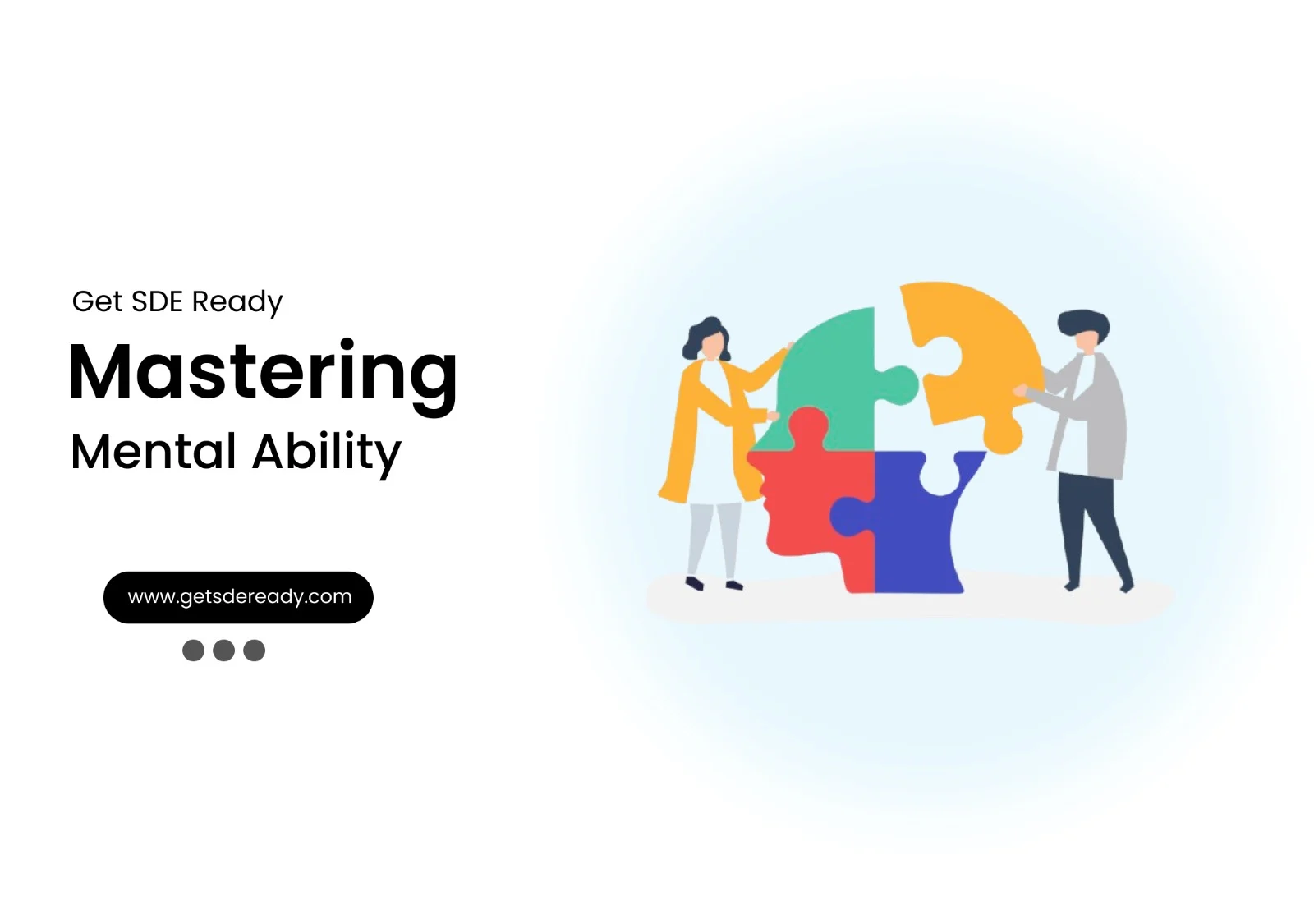Introduction to High-Level System Design
System Design Fundamentals
- Functional vs. Non-Functional Requirements
- Scalability, Availability, and Reliability
- Latency and Throughput Considerations
- Load Balancing Strategies
Architectural Patterns
- Monolithic vs. Microservices Architecture
- Layered Architecture
- Event-Driven Architecture
- Serverless Architecture
- Model-View-Controller (MVC) Pattern
- CQRS (Command Query Responsibility Segregation)
Scaling Strategies
- Vertical Scaling vs. Horizontal Scaling
- Sharding and Partitioning
- Data Replication and Consistency Models
- Load Balancing Strategies
- CDN and Edge Computing
Database Design in HLD
- SQL vs. NoSQL Databases
- CAP Theorem and its Impact on System Design
- Database Indexing and Query Optimization
- Database Sharding and Partitioning
- Replication Strategies
API Design and Communication
Caching Strategies
- Types of Caching
- Cache Invalidation Strategies
- Redis vs. Memcached
- Cache-Aside, Write-Through, and Write-Behind Strategies
Message Queues and Event-Driven Systems
- Kafka vs. RabbitMQ vs. SQS
- Pub-Sub vs. Point-to-Point Messaging
- Handling Asynchronous Workloads
- Eventual Consistency in Distributed Systems
Security in System Design
Observability and Monitoring
- Logging Strategies (ELK Stack, Prometheus, Grafana)
- API Security Best Practices
- Secure Data Storage and Access Control
- DDoS Protection and Rate Limiting
Real-World System Design Case Studies
- Distributed locking (Locking and its Types)
- Memory leaks and Out of memory issues
- HLD of YouTube
- HLD of WhatsApp
System Design Interview Questions
- Adobe System Design Interview Questions
- Top Atlassian System Design Interview Questions
- Top Amazon System Design Interview Questions
- Top Microsoft System Design Interview Questions
- Top Meta (Facebook) System Design Interview Questions
- Top Netflix System Design Interview Questions
- Top Uber System Design Interview Questions
- Top Google System Design Interview Questions
- Top Apple System Design Interview Questions
- Top Airbnb System Design Interview Questions
- Top 10 System Design Interview Questions
- Mobile App System Design Interview Questions
- Top 20 Stripe System Design Interview Questions
- Top Shopify System Design Interview Questions
- Top 20 System Design Interview Questions
- Top Advanced System Design Questions
- Most-Frequented System Design Questions in Big Tech Interviews
- What Interviewers Look for in System Design Questions
- Critical System Design Questions to Crack Any Tech Interview
- Top 20 API Design Questions for System Design Interviews
- Top 10 Steps to Create a System Design Portfolio for Developers
Introduction to High-Level System Design
System Design Fundamentals
- Functional vs. Non-Functional Requirements
- Scalability, Availability, and Reliability
- Latency and Throughput Considerations
- Load Balancing Strategies
Architectural Patterns
- Monolithic vs. Microservices Architecture
- Layered Architecture
- Event-Driven Architecture
- Serverless Architecture
- Model-View-Controller (MVC) Pattern
- CQRS (Command Query Responsibility Segregation)
Scaling Strategies
- Vertical Scaling vs. Horizontal Scaling
- Sharding and Partitioning
- Data Replication and Consistency Models
- Load Balancing Strategies
- CDN and Edge Computing
Database Design in HLD
- SQL vs. NoSQL Databases
- CAP Theorem and its Impact on System Design
- Database Indexing and Query Optimization
- Database Sharding and Partitioning
- Replication Strategies
API Design and Communication
Caching Strategies
- Types of Caching
- Cache Invalidation Strategies
- Redis vs. Memcached
- Cache-Aside, Write-Through, and Write-Behind Strategies
Message Queues and Event-Driven Systems
- Kafka vs. RabbitMQ vs. SQS
- Pub-Sub vs. Point-to-Point Messaging
- Handling Asynchronous Workloads
- Eventual Consistency in Distributed Systems
Security in System Design
Observability and Monitoring
- Logging Strategies (ELK Stack, Prometheus, Grafana)
- API Security Best Practices
- Secure Data Storage and Access Control
- DDoS Protection and Rate Limiting
Real-World System Design Case Studies
- Distributed locking (Locking and its Types)
- Memory leaks and Out of memory issues
- HLD of YouTube
- HLD of WhatsApp
System Design Interview Questions
- Adobe System Design Interview Questions
- Top Atlassian System Design Interview Questions
- Top Amazon System Design Interview Questions
- Top Microsoft System Design Interview Questions
- Top Meta (Facebook) System Design Interview Questions
- Top Netflix System Design Interview Questions
- Top Uber System Design Interview Questions
- Top Google System Design Interview Questions
- Top Apple System Design Interview Questions
- Top Airbnb System Design Interview Questions
- Top 10 System Design Interview Questions
- Mobile App System Design Interview Questions
- Top 20 Stripe System Design Interview Questions
- Top Shopify System Design Interview Questions
- Top 20 System Design Interview Questions
- Top Advanced System Design Questions
- Most-Frequented System Design Questions in Big Tech Interviews
- What Interviewers Look for in System Design Questions
- Critical System Design Questions to Crack Any Tech Interview
- Top 20 API Design Questions for System Design Interviews
- Top 10 Steps to Create a System Design Portfolio for Developers
High-Level Design of Facebook Messenger
Introduction
Facebook Messenger powers real-time conversations for over 500 million active users daily. Building such a system demands expertise in scalable architectures, distributed data stores, and low-latency communication. If you’re preparing for a system design interview, our complete system design training provides hands-on projects to master these concepts.
Core Requirements and Goals
Functional Requirements
- User Management: Registration, authentication, profile updates, and contact management.
- Messaging: 1:1 and group chat support for text, images, videos, and files.
- Real‑Time Delivery: Instant message updates via persistent connections.
- Notifications: In-app and push alerts for new messages.
- End‑to‑End Security: Encryption to ensure privacy.
For a quick primer on system design fundamentals, explore our system design crash course.
Non‑Functional Requirements
- Scalability: Seamlessly handle millions of concurrent users.
- Low Latency: Deliver messages in under 100 ms.
- High Availability: Fault‑tolerant services with multi‑region failover.
- Data Consistency: Prevent message loss or duplication.
- Storage Efficiency: Optimize for petabytes of text and media.
Capacity Planning and Constraints
What traffic can Facebook Messenger handle?
Assuming 25 billion messages per day, with an average of 2.33 reads per message:
- Write Requests: 25 B
- Read Requests: 58 B
- Total Requests: 83 B per day
That translates to an average of 960 K queries per second (QPS) and a peak of approximately 4.8 M QPS.
How much storage is needed?
- Daily Text Storage: 25 TB
- Annual Text Storage: 9 PB
- 5‑Year Projection (Text + Media): 450 PB
Bandwidth and Cache Requirements
- Daily Bandwidth: 1.3 PB (text + media) ≈ 15 GB/sec
- Caching: 10 % of messages (2.5 TB) stored in Redis for hot reads, plus 5 TB for metadata/indexing.
For insights into data analysis at scale, check our data science specialization.

System APIs Overview
A RESTful and WebSocket‑based API surface handles user interactions:
- Authentication (POST /api/login)
- Issues JWT tokens for session management.
- Issues JWT tokens for session management.
- Send Message (POST /api/messages)
- Persists to NoSQL, updates SQL conversation metadata, and pushes via Kafka/WebSockets.
- Persists to NoSQL, updates SQL conversation metadata, and pushes via Kafka/WebSockets.
- Fetch Messages (GET /api/messages?chat_id={id})
- Queries Cassandra/DynamoDB with Redis caching and pagination.
- Queries Cassandra/DynamoDB with Redis caching and pagination.
- Fetch Conversations (GET /api/conversations?user_id={id})
- Joins SQL tables for recent chat summaries and unread counts.
- Joins SQL tables for recent chat summaries and unread counts.
- User Presence (GET /api/user-presence?user_id={id})
- Retrieves online/offline status from Redis.
- Retrieves online/offline status from Redis.
- Group Chat: Create, send, fetch, and manage participants via /api/groups endpoints.
For a hands‑on introduction to building real‑time web applications, explore our web development bootcamp.
Database Schema: SQL and NoSQL Hybrid
To balance consistency and performance, Messenger uses:
- SQL (PostgreSQL/MySQL)
- Users, conversations, attachments, and group metadata.
- Users, conversations, attachments, and group metadata.
- NoSQL (Cassandra/DynamoDB)
- High‑write message storage with partition keys for fast retrieval.
- High‑write message storage with partition keys for fast retrieval.
- Redis
- In‑memory storage for presence, typing indicators, and hot messages.
- In‑memory storage for presence, typing indicators, and hot messages.
If you’re brushing up on algorithms and data modeling, our essential DSA and web development courses cover these fundamentals.
When to Use SQL vs NoSQL?
Use Case | Recommended Database | Rationale |
User Profiles | SQL | Transactional integrity and relations |
Chat Messages | NoSQL | High throughput and horizontal scalability |
Conversation Indexes | SQL | Consistent metadata joins |
Presence Tracking | Redis | Low‑latency reads and writes |
File Metadata | SQL | Referential integrity |
For a deep dive into data structures, check out our DSA fundamentals course.
High‑Level Architecture and Message Flow
System Component Placement
- API Gateway: Authentication and routing
- Microservices: Authentication, Messaging, Notifications, Presence, Media Storage
- WebSocket Servers: Real‑time message push
- Message Broker (Kafka): Durable queueing for offline delivery
- Load Balancers (Nginx): Distribute HTTP and WebSocket traffic
- Caching (Redis): Hot data and presence
- CDN/S3: Media storage and delivery
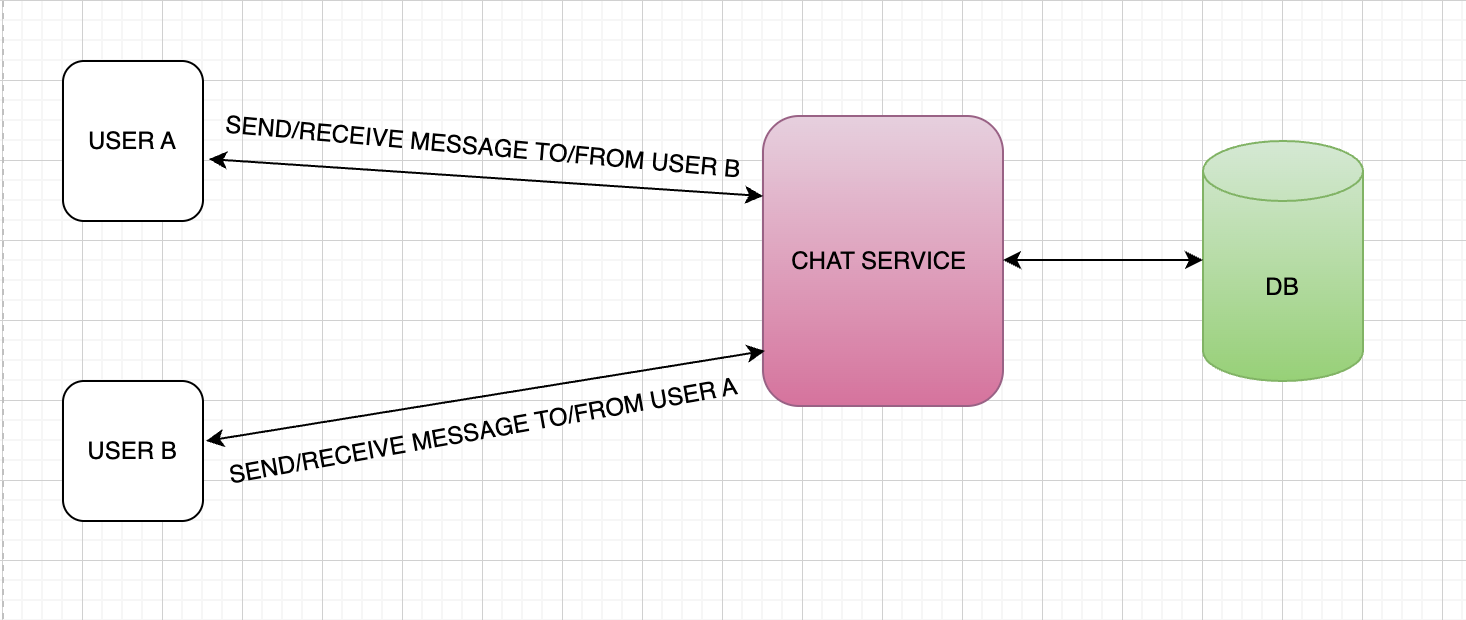
How are messages routed?
- User A sends a message to the API Gateway.
- Message Service checks recipient presence.
- Online: Push via WebSocket.
- Offline: Queue in Kafka.
- Online: Push via WebSocket.
- Delivery: Update status from sent → delivered → read.
- Group Chats: Fan‑out to all online members or queue for offline users.
Our system design crash course covers similar patterns end to end for a quicker path to building this yourself.
Enabling Real‑Time Communication
What is Polling?
Clients periodically request new messages. High latency and wasted requests make this unsuitable at scale.
What is Long Polling?
Servers hold connections open until new data arrives, reducing empty responses but still requiring reconnects.
Why WebSockets?
Persistent two‑way connections deliver instant updates with minimal overhead. Fallbacks to long polling can handle firewalls or unsupported clients.
For real‑time application best practices, see our web development bootcamp.
Data Retention and Cleanup
- Archival: Move messages older than one year to cold storage (S3/Glacier).
- Soft Deletion: Mark records for removal, then purge in background jobs (Airflow/Kafka Streams).
- Media Cleanup: Separate lifecycle policies for attachments in CDN/S3.
Partitioning, Replication, and Caching
- Sharding: Horizontal partitioning by user or conversation ID.
- Replication: Leader‑follower for writes and reads, multi‑region for global availability.
Cache Strategies: Redis for recent messages, CDN for static assets.
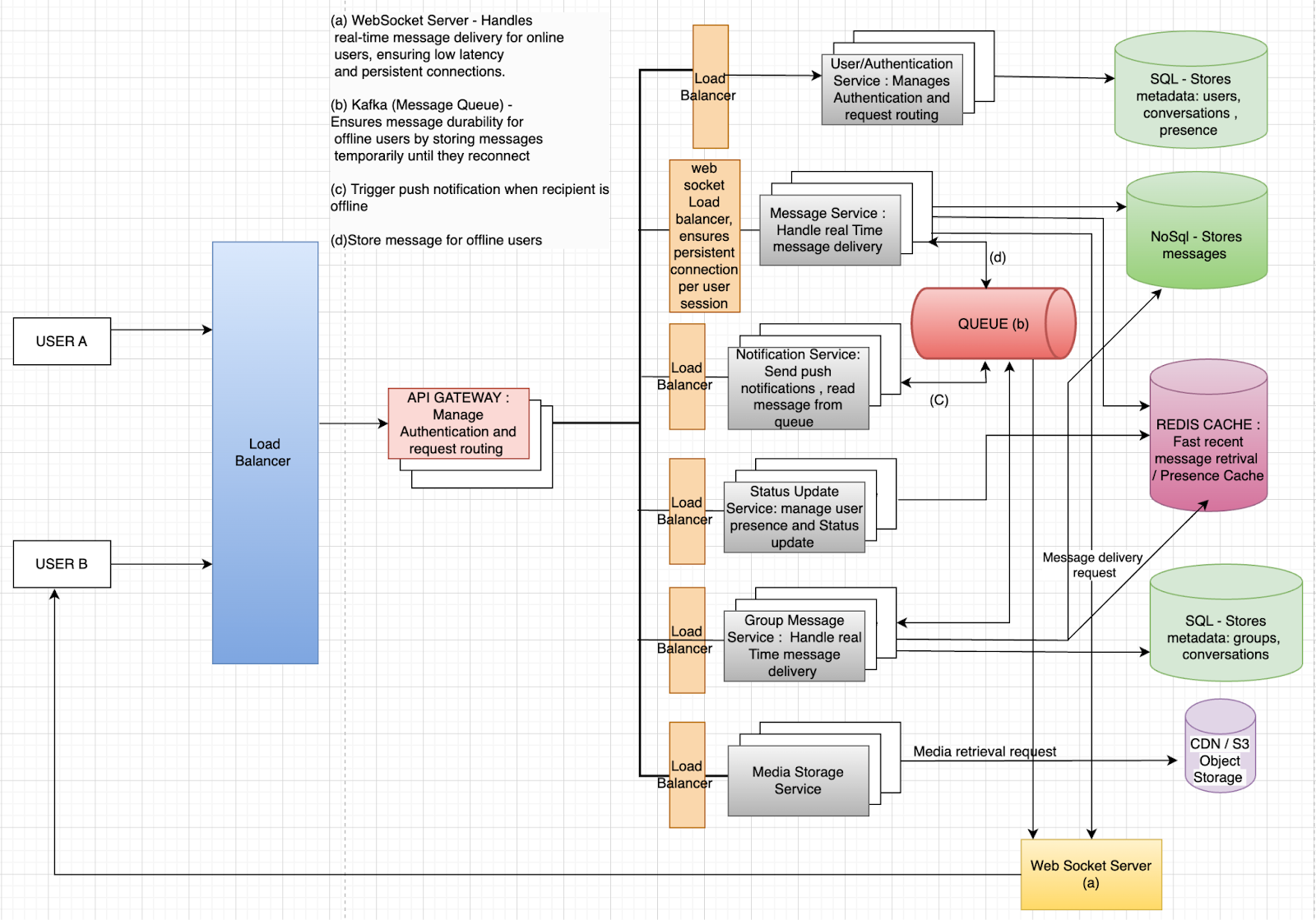
Understanding these patterns is critical for distributed systems engineers preparing for roles at top tech companies.
Future Enhancements: Voice and Video Calling
- WebRTC for peer‑to‑peer media streams.
- TURN/STUN Servers for NAT traversal.
- Selective Forwarding Unit (SFU) for group calls.
- Adaptive Bitrate (ABR) for network QoS.
- End‑to‑End Encryption with DTLS‑SRTP.
Common Q&A on Messenger’s System Design
How does Messenger handle real‑time messaging?
WebSockets provide low‑latency delivery. For additional context, review our Netflix DSA interview guide on streaming systems.
How are messages stored?
Messages land in a NoSQL store optimized for writes, then a SQL store tracks metadata. Prepare with our top 20 DSA interview questions.
How is push notification managed?
A Notification Service uses FCM/APNs with Kafka to queue messages. If you’re interviewing at Meta, check our Meta/Facebook DSA prep.
How does Messenger scale globally?
Load balancers, sharding, and multi‑region replication ensure users connect to the nearest data center.
How is message deletion handled?
Soft deletion flags records before background cleanup. For enterprise‑grade cleanup strategies, see our Atlassian DSA interview guide.
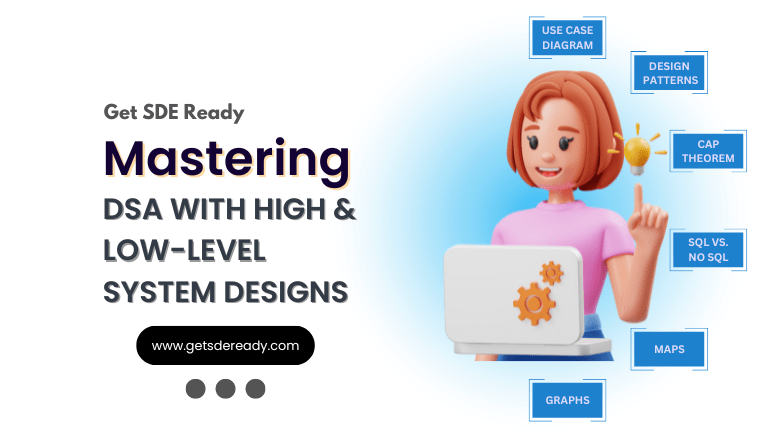
DSA, High & Low Level System Designs
- 85+ Live Classes & Recordings
- 24*7 Live Doubt Support
- 400+ DSA Practice Questions
- Comprehensive Notes
- HackerRank Tests & Quizzes
- Topic-wise Quizzes
- Case Studies
- Access to Global Peer Community
Buy for 52% OFF
₹25,000.00 ₹11,999.00
Accelerate your Path to a Product based Career
Boost your career or get hired at top product-based companies by joining our expertly crafted courses. Gain practical skills and real-world knowledge to help you succeed.

SDE 360: Master DSA, System Design, AI & Behavioural
- 100+ Live Classes & Recordings
- 24*7 Live Doubt Support
- 400+ DSA Practice Questions
- Comprehensive Notes
- HackerRank Tests & Quizzes
- Topic-wise Quizzes
- Case Studies
- Access to Global Peer Community
Buy for 50% OFF
₹39,999.00 ₹19,999.00

DSA, High & Low Level System Designs
- 85+ Live Classes & Recordings
- 24*7 Live Doubt Support
- 400+ DSA Practice Questions
- Comprehensive Notes
- HackerRank Tests & Quizzes
- Topic-wise Quizzes
- Case Studies
- Access to Global Peer Community
Buy for 52% OFF
₹25,000.00 ₹11,999.00

Fast-Track to Full Spectrum Software Engineering
- 120+ Live Classes & Recordings
- 24*7 Live Doubt Support
- 400+ DSA Practice Questions
- Comprehensive Notes
- HackerRank Tests & Quizzes
- 12+ live Projects & Deployments
- Case Studies
- Access to Global Peer Community
Buy for 51% OFF
₹35,000.00 ₹16,999.00
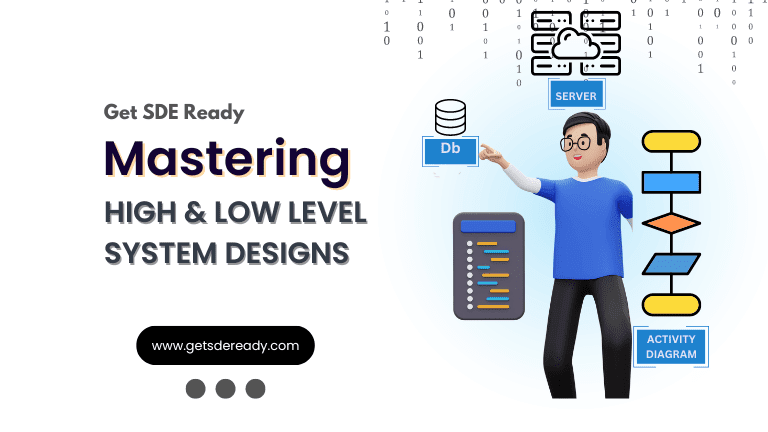
Low & High Level System Design
- 20+ Live Classes & Recordings
- 24*7 Live Doubt Support
- Case Studies
- Comprehensive Notes
- HackerRank Tests
- Topic-wise Quizzes
- Access to Global Peer Community
- Interview Prep Material
Buy for 60% OFF
₹20,000.00 ₹7,999.00
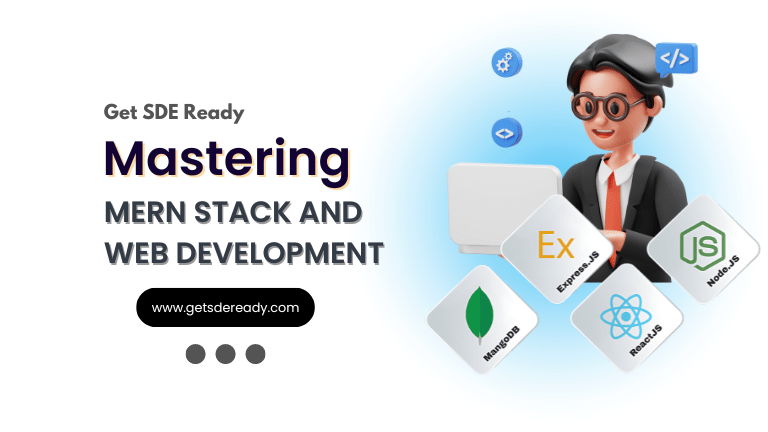
Mastering Mern Stack (WEB DEVELOPMENT)
- 65+ Live Classes & Recordings
- 24*7 Live Doubt Support
- 12+ Hands-on Live Projects & Deployments
- Comprehensive Notes & Quizzes
- Real-world Tools & Technologies
- Access to Global Peer Community
- Interview Prep Material
- Placement Assistance
Buy for 53% OFF
₹15,000.00 ₹6,999.00
Reach Out Now
If you have any queries, please fill out this form. We will surely reach out to you.
Contact Email
Reach us at the following email address.
arun@getsdeready.com
Phone Number
You can reach us by phone as well.
+91-97737 28034
Our Location
Rohini, Sector-3, Delhi-110085

